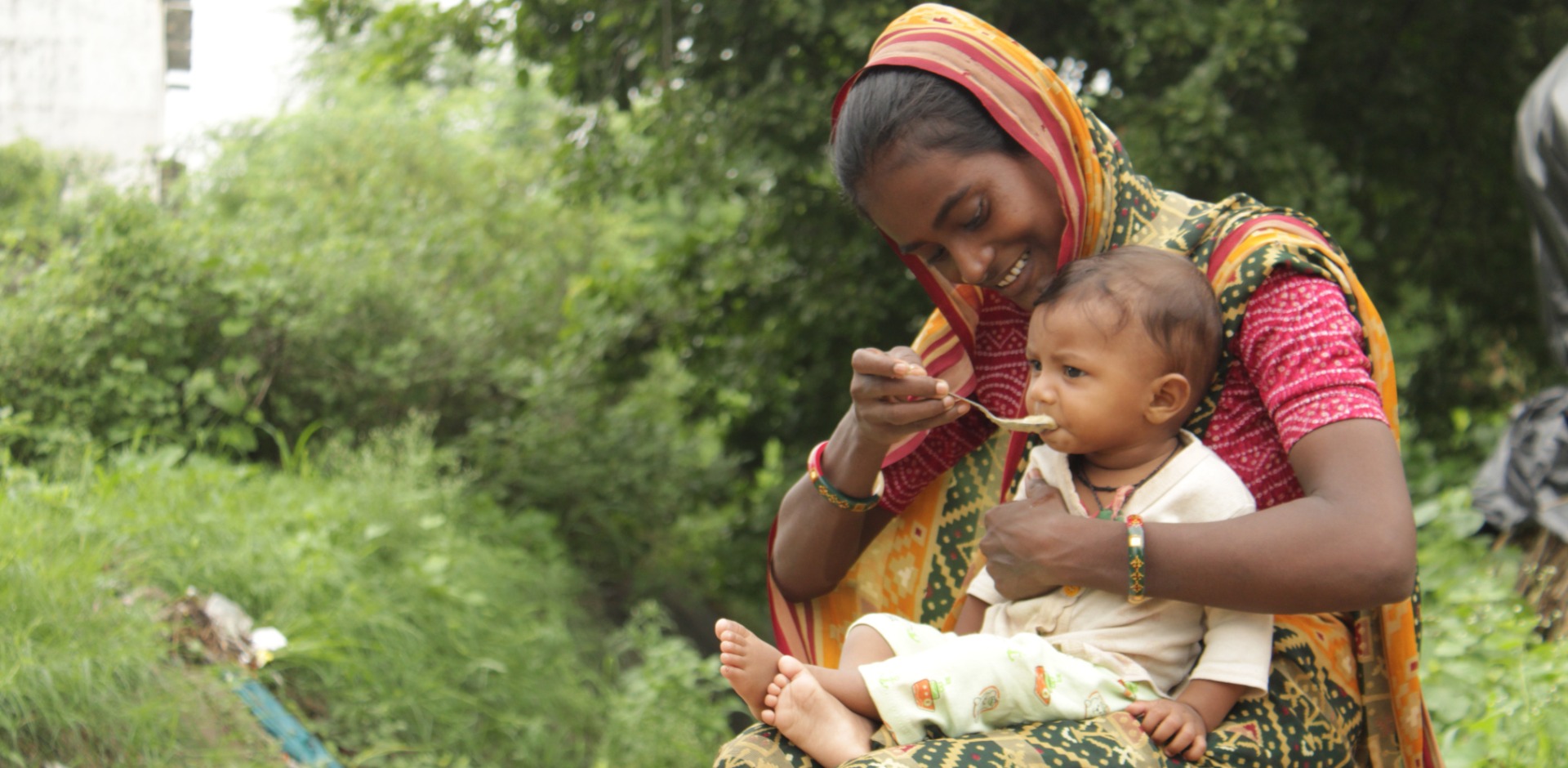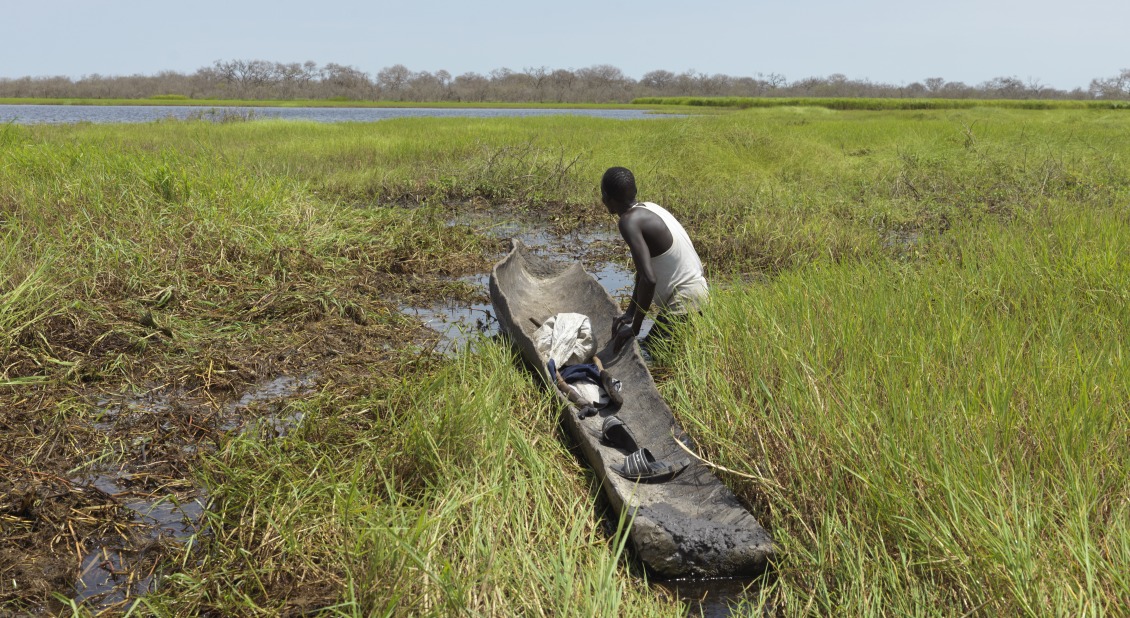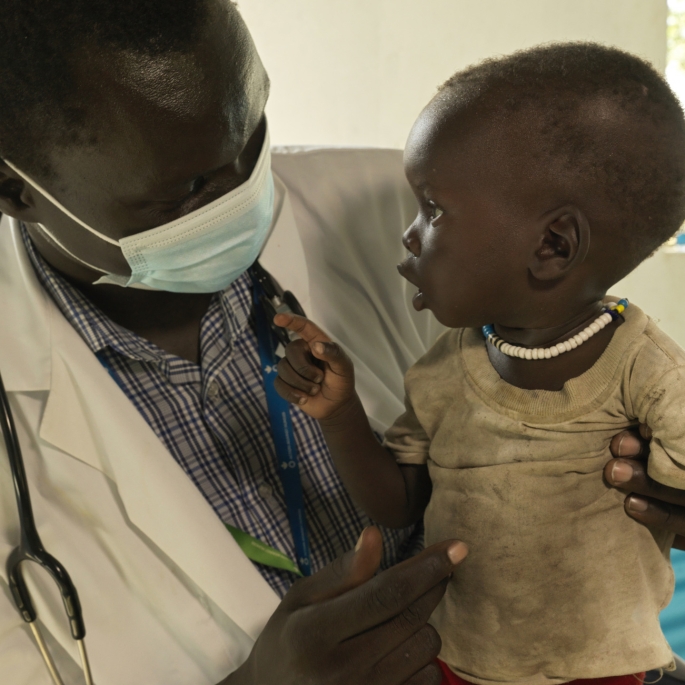
This Holiday Season, Give the Gift of Hope

Paguir, South Sudan, has been flooded for years. Rain and overflowing rivers — triggered in part by climate change — has all but submerged surrounding villages. The floods have destroyed crops, polluted drinking water, spread water-borne illnesses, and destroyed livelihoods. Thousands are struggling to feed themselves and their families.
The people of Paguir needed a lifeboat, and they needed it fast. They resolved to find a solution together. Even as the floods seemed to wash away all hopes, they refused to give up. Standing united, community members began to brainstorm, and the idea of a waterway was born.
Even before the recent extended flooding, for years, Paguir had been virtually cut off from the rest of the world. Boaters were forced to navigate thick grasses and tall plants beneath the water’s surface. In order to pass through, people had to slash the undergrowth and forcefully shove it aside, a process that could take hours.
“If you wanted to go to Paguir you had to sit for four hours in a local canoe, which is a hollowed-out tree trunk. In those canoes, there is no way to relax or relieve yourself. The best you could do is stretch your legs then pull them back,” says Joe Joe Zubahyeah, Action Against Hunger’s Head of Base in Paguir, who was shocked by what residents and his staff had to endure to reach the small village.

After three years of flooding, the problem was only getting worse. Many areas of Paguir were only accessible by chartered planes – and their runways were covered in water, making them unusable. In emergency situations, ill or injured residents had to wait hours for assistance.
Action Against Hunger, the first and still one of the few humanitarian organizations to operate in Paguir, faced countless challenges in delivering lifesaving assistance to the community. Our teams often had to carry supplies on their backs through the swamps to establish the area’s first community nutrition and health center, install water points, and provide food aid.

Years of flooding have left the communities in South Sudan with little to no crops and few animals. With help from Action Against Hunger, a new crop grown in the floodwaters — rice — has transformed their lives.
As the waters refused to recede and years passed, the villagers mobilized. Together, they cleared a safe route through the swamp grasses for boats to travel.
“All of us have suffered due to the water. And the humanitarian support was not able to come to our area because the road was blocked. That is why we volunteered ourselves to go and open the way,” says Tito Biel, one of the many villagers who volunteered to clear the water. Sickle in hand—and without hesitation—Tito slashed through the grass.
With support from Action Against Hunger, dozens of villagers took on the strenuous initiative and made fast progress. Local authorities backed the efforts, too, and were proud of the village for achieving such a daunting goal. About 50 people worked through as much as 30 feet of waterway per day. They were provided with food and cash assistance to sustain themselves and their families as they worked.

“People who were surviving only on fish and water lilies could support their family with this money while they were working to open the waterway — for the benefit of the community and of Action Against Hunger as well,” says James Gatluak, Action Against Hunger’s Health and Nutrition Program Manager in Paguir.
After four months, the waterway was finished. Communities are already reaping the benefits: Medicine is arriving on time. Doctors can provide urgent treatment to their patients. Trade and local businesses are growing rapidly. Humanitarian organizations can coordinate their deliveries and use the waterway to transport badly-needed supplies.
“The waterway is benefiting other organizations, the community, the local traders, and Action Against Hunger. There is no limit…it’s lifesaving to everyone.” – Chuit Deng, Logistics team

Growing up during years of civil unrest, many of Paguir’s young people were trapped in a cycle of violence and conflict. Many felt they had no choice but to join violent crime groups and were turned away from their communities. They came of age during the flood years—without farms to cultivate, cattle to look after, jobs to focus on, or money to meet their personal needs. Often, they turned to guns and gangs.
Today, thanks to the opportunities that have come with the waterway and other economic initiatives, more young people have a chance to become entrepreneurs. They can find a sense of purpose and pride in their village. They can once again feel secure in their ability to feed themselves. Their past does not prohibit them from a promising future.
“[Before] I was just sitting idle. I didn’t have any work,” Gatwech Luok, a 20-year-old shop owner. “Until that idea came to my mind of starting a business…I used to go to catch fish in the river for a long time, then sell them to get money. It took me six months [to save enough to set up the shop].”
Five years ago, Paguir didn’t have a health center. Three years ago, it didn’t have a single market stall. Now, healthcare is available to all, and trade is a way of life.

Action Against Hunger’s Stabilization Center is helping to create a healthier, thriving community in one of South Sudan’s hardest-to-reach areas.
“This waterway is helping us a lot,” adds Gatwech. He spends his days manning his shop, selling a vast assortment, pouches of cooking oil, sugar, and spices. “Before Action Against Hunger opened this waterway, we weren’t able to get goods from Old Fangak or elsewhere. They couldn’t reach us.”
Lam, another of Paguir’s youth, has watched his life transform. The waterway has opened new paths for him—literally. Last year, the 23-year-old would take off in the pitch-black dawn and row four hours to reach Old Fangak. There, he would buy high-priced goods to fuel his dreams of owning his own shop. Then he would row four hours back, carrying as many products as he could.
Now, the waterway is a fast-track for Lam. Not only can he get to Old Fangak in half the time, he can travel to Juba, South Sudan’s capital city—a place he had only dreamed of visiting.
“The waterway opened many connections to other places,” says Lam. For the first time ever, the young man can use his profit to pursue his goals. “If I get enough money I will switch from selling food to selling clothes…If I get enough money, maybe I can go study business.”
Lam provides sacks of sorghum to restaurants in Paguir. Diew Yak, one of the restaurant owners, would not have a livelihood without this essential good.
“Without any connection to get sorghum to make more kizras, I would have to close this business,” she says. “This restaurant is functioning just because of the waterway. If it was not there, even these small shops wouldn’t be here.”
Years after the floods washed away hundreds of livelihoods, the people of Paguir are finding ways to begin again. The waterway has opened up a path to trade, travel, food security and healthcare.
Join our community of supporters passionate about ending world hunger.